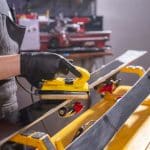You are passionate about classic cars and you’re always seeking ways to keep yours in the best possible condition. One aspect that often comes into focus is the aluminum intake manifold. If treated correctly, it can shine like a jewel sitting under the hood of your classic automobile. The question often arises, what’s the most effective technique for polishing an aluminum intake manifold? Throughout this article, we will delve into this topic, discussing the methods that have received the most likes from the automotive forums and the best products to achieve that mirror-like finish.
Location Matters: Where to Polish Your Intake Manifold
Before diving into the technicalities of the polishing process, it’s essential to discuss a crucial pre-condition: the location. The place where you will execute the polishing process can dramatically influence the outcome. Why? Because it involves the use of polishing compounds and power tools that may disperse particulates in your surroundings.
Also to see : Can a Larger Throttle Body Improve Airflow in a Naturally Aspirated Honda Accord?
Ideally, you should choose a well-ventilated area that will allow the dust and other particles to escape. The location should also have good lighting to ensure you can see all the spots that need attention on the manifold.
This is not just about achieving a pristine finish. It’s also about your health and safety, as well as the well-being of others who may be in proximity. Several forum posts recommend setting up a makeshift work area in a garage or outdoor space, using tarps or similar materials to protect surrounding objects.
Also to see : What’s the Most Efficient Method for Calibrating a High-Performance Throttle Body in a Ford GT?
Selecting the Right Polishing Tools and Materials
Once you’ve identified a suitable location, the next step is to gather the necessary tools and materials for polishing your aluminum intake manifold. Numerous threads in online automotive forums have discussed this topic, with a consensus being that the quality of the polishing tools and materials will directly influence the finished result.
The basic kit for this job includes a variable speed rotary tool, a variety of buffing pads, and a good quality aluminum polish. The variable speed rotary tool allows you to control the speed of the polishing process, which is particularly useful when working on an aluminum intake manifold with intricate details or hard-to-reach areas. The buffing pads are essential for applying the polish and for achieving the desired shine.
An effective aluminum polish is one that is specifically designed for use on aluminum surfaces. It should be capable of removing oxidation and surface scratches while leaving a glossy, mirror-like finish. A product that has been well-received by the car enthusiast community is Mother’s Mag and Aluminum Polish.
The Polishing Process: Step-by-Step Guide
Now that you have your location and materials ready, let’s delve into the actual process of polishing your intake manifold. Remember, patience is key in this process; rushing will not yield the best result.
Starting with a clean manifold, apply a small amount of aluminum polish to the buffing pad on your rotary tool. Set the tool to a low speed to start with – this will help to keep the polish on the manifold and not splattered all over your work location.
Gently move the buffing pad over the surface of the manifold. It’s important to maintain a steady hand and use consistent movements to achieve an even finish. As you progress, you can gradually increase the speed of the rotary tool, ensuring that you are still in control and not pushing too hard.
After you’ve finished the initial polishing stage, wipe the manifold down with a microfiber cloth to remove any excess polish. Inspect your work and repeat the process if necessary until you have achieved the desired finish.
Post-Polishing Care: Maintaining the Shine
After investing time and effort into achieving a polished aluminum intake manifold, it’s essential to maintain that gleaming finish. Exposed to the elements, the manifold can quickly lose its shine due to oxidation and dirt accumulation.
To keep your manifold looking its best, regularly clean it with a non-abrasive cloth and mild detergent. Periodically, it may be necessary to repolish the surface, particularly if the manifold is exposed to harsh conditions or aggressive cleaning methods.
There are also protective products available on the market designed to prevent oxidation and maintain the polished finish. These can be applied after the polishing process and reapplied as needed.
In conclusion, polishing an aluminum intake manifold on a classic car requires careful selection of location, tools, and materials, followed by a patient and meticulous polishing process. Regular care and maintenance will ensure the manifold continues to shine, reflecting your deep passion and commitment to preserving the beauty and authenticity of your classic car.
Taking Care of the Auxiliary Components: The Valve Covers
To ensure a consistent and elegant look for your classic car engine, don’t stop at just polishing the aluminum intake manifold. The valve covers, often made of the same material as the manifold, are another vital part that can add sparkle to the engine bay, providing you pay them the same attention.
The valve covers can be considered the "crown" of your engine, particularly if they are originally made from aluminum, and can shine bright under the hood. The process of polishing the valve covers is similar to that of the intake manifolds. You will need similar tools and materials, including your rotary tool, buffing pads, aluminum polish, and a good supply of patience.
When polishing valve covers, make sure to remove them from the engine first. This will help you access all areas and corners, ensuring an even finish. Apply the aluminum polish on the buffing pad and follow the same process as you did with the intake manifold.
Ensure to go easy with the rotary tool, especially around the edges and the bolt holes, to avoid causing any damage. Once you’re satisfied with the shine, wipe them down with a microfiber cloth to remove any residual polish.
Remember, just like the intake manifolds, the valve covers will need periodic care and attention to maintain their shine. Clean regularly with a mild detergent and a non-abrasive cloth, and consider applying a protective product to prevent oxidation.
Conclusion: Polishing as a Testament to Passion
Polishing an aluminum intake manifold and the accompanying valve covers is not a task for the faint-hearted. It requires a significant investment of time, effort, and patience. However, those who have gone through the process agree that the rewards far outweigh the effort involved.
The shiny manifold and valve covers are more than just attractive components under the hood. They are a testament to the owner’s passion, commitment, and meticulous attention to detail. Moreover, the knowledge you gain from this endeavor will not only help you maintain your classic car but also deepen your connection with it.
In essence, the likes and posts on the numerous forums that discuss polishing aluminum intake manifolds and valve covers are not just about the most effective techniques or the best products. More importantly, they are a reflection of the shared passion and dedication of a vibrant community of classic car enthusiasts.
So, as you embark on this rewarding journey of polishing your intake manifold and valve covers, remember to enjoy every moment. After all, it’s not just about the glorious mirror finish. It’s about the journey, the learning, and the satisfaction that comes from preserving a piece of automotive history. Good luck!
















